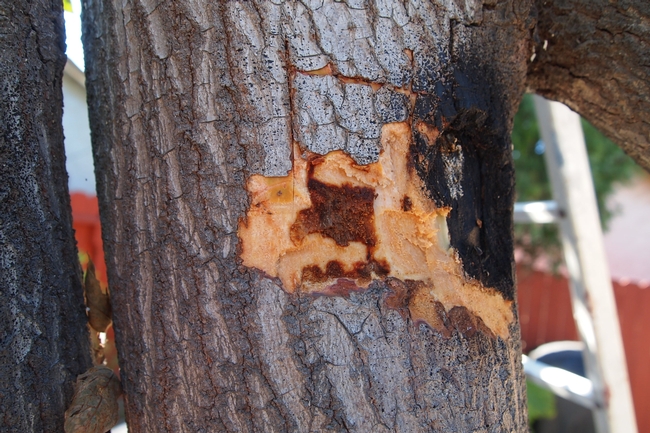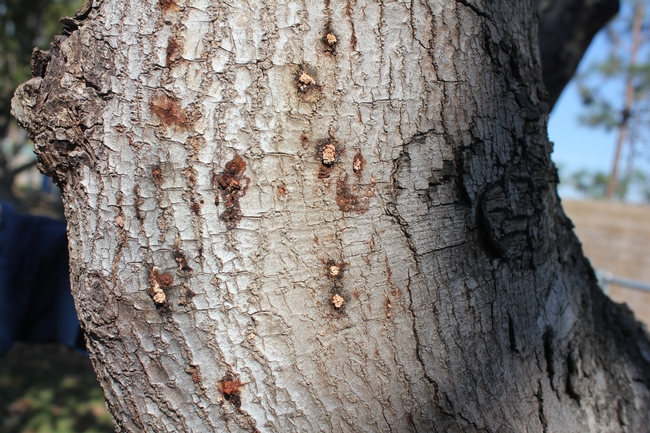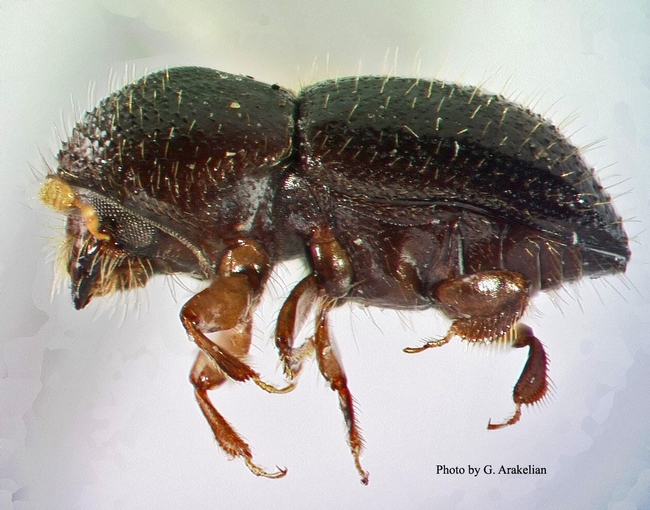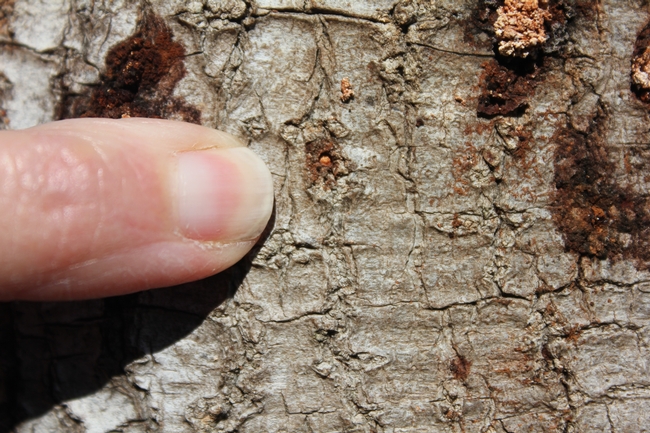Have you seen a Polyphagous shot hole borer lately?
The “Invasive Ambrosia Beetle Public Meeting” that took place on Aug. 14 in Riverside, Calif., turned the spotlight on a beetle named “Polyphagous shot hole borer.” The PSHB has spread in Los Angeles and Orange counties. Both the beetle and a fungus it spreads were found on several backyard avocado trees in residential neighborhoods in these counties earlier this year. The beetle is responsible for the death of box elder trees in Long Beach in 2010. The box elder is one of the best hosts for the PSHB.
The beetle is very small and hard to see. Females are black in color and 0.07-0.1 inch long. The beetle burrows into the wood, leaving a hole (there are often many entry holes on an infested tree). The beetle then infects the host plant with a new Fusarium fungus, which it carries in its mandibles, a result of a symbiotic relationship between the beetle and fungus.
The fungus, in turn, attacks the vascular tissue of the tree, disrupting water and nutrient flow within the tree and eventually causing branch dieback. Fusarium dieback symptoms on avocado include a white powdery exudate — either dry or surrounded by wet discoloration of the outer bark — around a beetle entry hole.
The panelists at the public meeting were UC Riverside's Mary Lu Arpaia, UC Cooperative Extension specialist in the Department of Botany and Plant Sciences at UC Riverside, subtropical horticulture; Akif Eskalen, UCCE specialist in the Department of Plant Pathology; Mark Hoddle, UCCE specialist in the Department of Entomology and the director of the Center for Invasive Species Research; Timothy Paine, professor in the Department of Entomology; and Richard Stouthamer, professor in the Department of Entomology. They were joined by Zvi Mendel of the Agricultural Research Organization, Israel; Donald Hodel, UCCE advisor in Los Angeles County; Tom Roberts of the pest management industry; and Tom Coleman of the U.S. Department of Agriculture Forest Service.
The panelists explained that the beetle may have come from Southeast Asia or possibly Africa. There is no good solution for dealing with the beetle and the fungus. Preventive management, including sanitation, is the best option.
Several speakers advised not to move infested wood away from an infected zone and not to accept mulch from infected areas. Growers were advised to monitor the nutritional status of their trees, chip infested branches within the infested area and sterilize tools between cuts. Proper irrigation of trees was also recommended because over-watered and under-watered trees attract this beetle.
The PSHB appears to be “tasting” different trees in search for a good host. Neither the adults nor the larvae eat the plants and wood; they live in “galleries” within the tree and feed on the fungus.
Much about the PSHB remains unknown. What is known is that the beetle population can expand its range by about 12 miles a year. The beetle flies from tree to tree, and up and down a tree as well. Facilitated movement — packing wood, firewood — helps transport the beetle to far off places.
Chemical control has, so far, not been effective on the PSHB. Tarping or enclosing infested material is one of the solutions being considered. Heat treatment, fumigation and burning are other options on the table. Chipping and grinding are the best options at the moment.
The beetle is able to reproduce in only a small number of tree species. Known suitable hosts of the both PSHB and fungus are box elder, avocado, castor bean, English oak, coast live oak, silk tree, liquidambar, Coral, Titoki, California sycamore, Blue Palo Verde and big leaf maple.
If you suspect you have found the PSHB or seen symptoms of Fusarium dieback in your grove or surrounding areas in other host plants, please contact your local farm advisor, pest control advisor, county ag commissioner office or UC Riverside's Dr. Akif Eskalen at 951-827-3499 or akif.eskalen@ucr.edu. You can also call the California Avocado Commission at 949-341-1955.
The public meeting in Riverside was part of a longer three-day meeting that was organized by the Hofshi Foundation with additional sponsoring from the UCR Center for Invasive Species Research, the Entomology, Plant Pathology and Microbiology, and Botany and Plant Sciences departments, UC Cooperative Extension, the Los Angeles Arboretum, the Huntington Botanical Gardens and the California Avocado Commission.

An example of wood discoloration due to Fusarium dieback. Photo credit: Eskalen Lab, UC Riverside

Multiple entry holes on avocado trunk. Photo credit: Eskalen Lab, UC Riverside.
Comments:
I live in Dana Point. Our area has many trees (Danawoods hoa) I am concerned about my citrus trees.




Posted by Chester Chesbro on October 11, 2012 at 9:25 AM